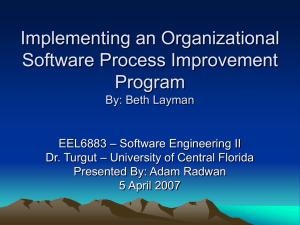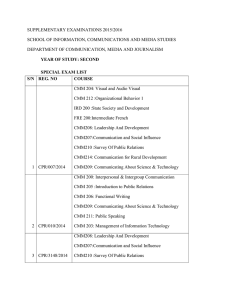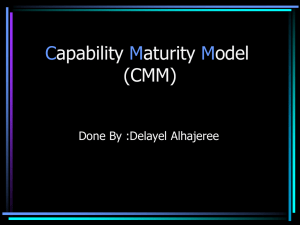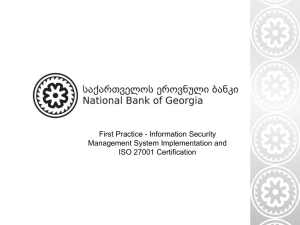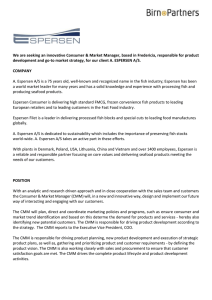Systems development process
advertisement
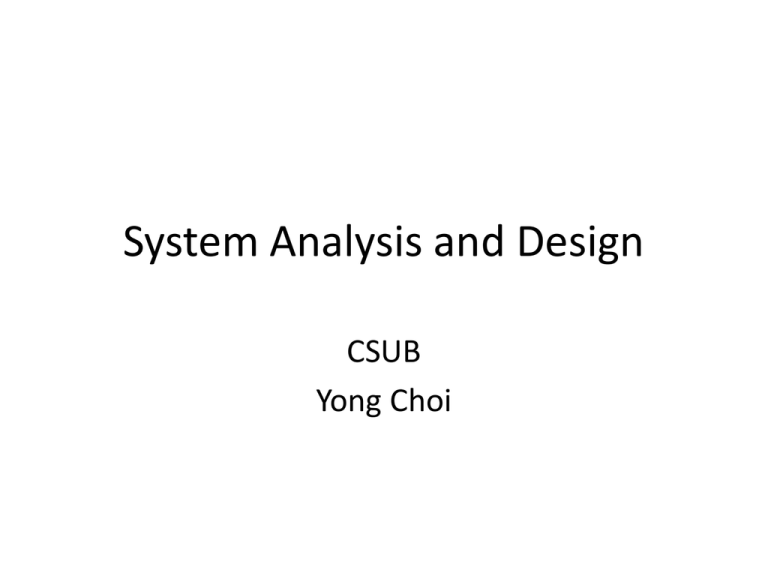
System Analysis and Design CSUB Yong Choi Systems Analysis Phases • Scope Definition Phase : WHAT PROBLEM – Is the project worth looking at ? • Problem Analysis Phase: WHAT ISSUES – Is the new system worth building? • Requirements Analysis Phase: WHAT REQUIREMENTS – What do stakeholders need and want from the new system? • Logical Design Phase: WHAT TO DO – What the new system must do. • Decision Analysis Phase: WHAT SOLUTION – What is the best available solution ? 2 Requirements Analysis Tasks 3 Requirements Discovery The process and technique that business analyst and developer use to identify, analyze, and understand system requirements. – systems requirements specify what the information system must do, or what property or quality the system must have. 4 Results of Incorrect Requirements • The system may cost more than projected. • The system may be delivered later than promised. • The system may not meet the stakeholders’ expectations and that dissatisfaction may cause them not to use it. • Once in production, the costs of maintaining and enhancing the system may be excessively high. – Commercial Application Packages • The system may be unreliable and prone to errors and downtime. 5 Relative Cost to Fix an Error 6 New Denver airport • • • • Twice the size of Manhattan, NY 10 times wider than London airport Big enough to land three jets simultaneously-in bad weather Baggage-handling information system – – – – – One of kind… Started September of 1989 Expensive: $1.7 billion (original price) Very large size…. The most advanced and sophisticated automated baggage handling system Scale of baggage-handling system • 21 miles of steel track – Tearing like intelligent coal-mine cars • 4,000 independent "telecars" route and deliver luggage between the counters, gates and claim areas of 20 different airlines. • Size of the system – 100 computers are networked to one another and to 5,000 electric eyes – 400 radio receivers – 56 bar-code scanners orchestrates the safe and timely arrival of every valise and ski bag. Result • Scheduled to open Nov, 94 • Delayed nine-month because of system glitches. – Original price $1.7 billion, final cost $4.8 billion – Their bond rating demoted to junk and their budget hemorrhaging red ink at the rate of $1.1 million a day in interest and operating costs. The Process of Requirements Discovery • • • • Problem discovery and analysis Requirements discovery Documenting and analyzing requirements Requirements management to handle changes 10 Analyzing Requirements • Analyzing requirements to resolve problems of: – – – – – Missing requirements Conflicting requirements Infeasible requirements Overlapping requirements Ambiguous requirements • Formalizing requirements – Requirements definition document – Communicated to stakeholders or steering body 11 Fact-Finding Technique ** ..is used for across the entire development cycle, but extremely critical in the requirements analysis phase..** • Seven common techniques 1. Sampling of existing documentation, forms, and databases. 2. Research and site visits. 3. Observation of the work environment. 4. Questionnaires. 5. Interviews. 6. Prototyping. 7. Joint requirements planning (JRP). 12 System Development Process Systems development process: • a set of activities, methods, best practices, deliverables, and automated tools that stakeholders use to develop and continuously improve information systems and software . Using a standardized framework: – – – Create efficiencies that allow management to shift resources between projects Produces consistent documentation that reduces lifetime costs to maintain the systems Promotes quality: All US Gov. systems development requires certain quality management requirements such as CMM model. The Capability Maturity Model Capability Maturity Model (CMM) – a standardized framework for assessing the maturity level of an organization’s information system development and management processes. – Highly recognized and famous model – Developed by The Software Engineering Institute (SEI) – Is being used to qualify IS developers for US federal Gov. projects. CMM consists of five levels of maturity. – Each level is a prerequisite for the next level. The CMM Process Management Model (con’t) – Level 1—Initial: System development projects follow no prescribed process. – Level 2—Repeatable: Project management processes and practices are established to track project costs, schedules, and functionality. – Level 3—Defined: A standard system development process (sometimes called a “methodology”) is developed. All projects use a version of this process to develop and maintain information systems and software. – Level 4—Managed: Measurable goals for quality and productivity are established (some IT companies are getting closer……) – Level 5—Optimizing: The standardized system development process is continuously monitored and improved based on measures and data analysis established in Level 4. Impact of System Development “Process” on Quality CMM Project Statistics for a Project Resulting in 200,000 Lines of Code Organization’s CMM Level Project Duration (months) Project PersonMonths Number of Defects Shipped Median Cost ($ millions) Lowest Cost ($ millions) Highest Cost ($ millions) 1 30 600 61 5.5 1.8 100+ 2 18.5 143 12 1.3 .96 1.7 3 15 80 7 .728 .518 .933 • Significant improvements in terms of schedule and cost at level 3 • Thus, most organizations pursuing the CMM are targeting level 3. More about CMM model • Implications – You CANNOT skip level • It takes time to move from one level to the next • Not many organization are above level 1 • Highly difficult to start at the level 3 – Esoteric new technology should be avoided at the lower levels (especially level 1 and 2) – Starting level for the off-the-shelf systems – The levels are already becoming important for contracts. Basic principle's of System Development 1. Get the system stakeholders involved. 2. Documentation through development 3. Establish standards 4. Manage the process and projects 5. Design systems for growth and change.

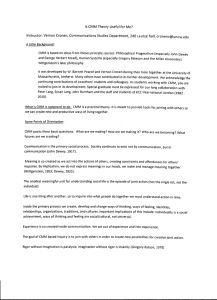
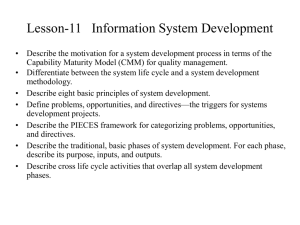
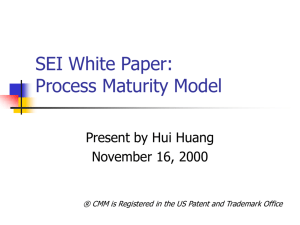
![Applying CMM to the World Around Us [ Coordinated Management of Meaning Theory]](http://s2.studylib.net/store/data/012010467_1-d2940c3fb45f516ffd9acdfa3cb2955d-300x300.png)

